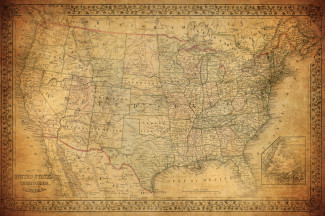
Johns Hopkins UniversityEst. 1876
America’s First Research University
The Webster-Hayne Debate: Defining Nationhood in the Early American Republic

For generations, school children remembered the Webster-Hayne Debate by memorizing the ending to Daniel Webster’s Second Reply to Robert Y. Hayne. Its soaring articulation of nationalism and American nationhood—“Liberty and Union, now and forever, one and inseparable”—became a catchphrase for what American union meant. In one sentence, it summed up the Massachusetts senator’s career. For over 100 years after Webster first spoke those words in 1830, one could find them in history books and oratory manuals. They adorned statues of Webster and the facades of public buildings. Yet in modern times the debate has been relegated to a few lines in college textbooks. Why has the Webster-Hayne Debate been largely forgotten? That question led me to write The Webster-Hayne Debate: Defining Nationhood in the Early American Republic. Not only did I rediscover the history of the debate itself, but also how the debate illustrates the different ways in which Americans have understood what it means to be a nation.
Then and now, Webster’s dazzling oratory tends to overshadow the underlying meanings behind the Webster-Hayne Debate. Webster believed that the United States was a nation created by the people and held together by a single national government. His view of nationhood encompassed a strong—some might say activist—government working for the common public good. True, individual states made up this union, but Webster saw them as subordinate to the national government that acted in the interest of the entire nation. The New England states, in Webster’s time, were fast becoming a manufacturing and commercial powerhouse. It would take a powerful, centralized government, Webster believed, to build the American economy and keep the union alive. If you read this description and think to yourself that Webster’s ideas seem similar to those of that founding father with a musical written about him, you are on the right track. Webster’s ideas do share much in common with those of Alexander Hamilton.

History has all but forgotten Webster’s debate partner, South Carolina Senator Robert Y. Hayne, who had vastly different ideas about nationhood. A political disciple of John C. Calhoun, Hayne believed that the Union was a confederation of sovereign states. Each state maintained its sovereignty and delegated only a few, specific powers to the national government. More ominously, Hayne believed that an individual state could nullify a federal law that infringed on state sovereignty or even withdraw from the Union. The southern way of life, according to Hayne, required the constant protection of states’ rights and state sovereignty. And by 1830, Hayne and his followers believed that Daniel Webster and the North’s vision of Union posed a long-term threat to the South and its slaveholding regime based on agriculture, especially cotton. Hayne identified his ideas with those of Thomas Jefferson and James Madison, but his theories on state sovereignty were more extreme than the two Founding Fathers had conceived. Madison, still alive in 1830, went so far as to disassociate himself and his legacy from the more radical Hayne.
Which senator had defined American nationhood correctly? Of course, history only rarely provides neat answers to such questions. Perhaps the biggest surprise of all in my research came in the form of a relatively tidy answer to this question. Webster and Hayne had staked out two visions of Union that seem like polar opposites, but their four speeches only started the debate. Between January and May 1830, twenty-one of the forty-eight senators delivered a staggering sixty-five speeches on the nature of the Union. Most are forgettable, to put it charitably. A speech by Louisiana Senator Edward Livingston, however, neatly explains how American nationhood encompasses elements of both Webster and Hayne’s ideas. Livingston, a veteran politician and close confidante of the president in 1830, Andrew Jackson, argued that the United States was a federal union, a unique creation in which Americans had divided sovereignty between the states and the national government.
On nullification and disunion, however, Livingston took sides decisively with Daniel Webster against Robert Hayne. A state could not nullify a federal law or dissolve the Union. The American constitutional system did not allow for either option. Livingston’s ideas followed those of his boss, Andrew Jackson, who denied nullification during the course of the Webster-Hayne Debate with his memorable toast to Calhoun, Hayne, and the nullifiers, “Our federal Union: it must be preserved!”
Finding Edward Livingston’s speech gave new meaning to the Webster-Hayne Debate because his words more accurately defined American nationhood than the debate’s two protagonists. True, in modern times the United States probably leans more toward Webster’s vision of Union, but Americans still argue about states’ rights and nationalism and how we divide sovereignty. The Webster-Hayne Debate, in its entirety, shows modern Americans that nationhood has always been messy.
Christopher Childers is an assistant professor of history at Pittsburg State University. He is the author of The Webster-Hayne Debate: Defining Nationhood in the Early American Republic, and The Failure of Popular Sovereignty: Slavery, Manifest Destiny, and the Radicalization of Southern Politics and the coauthor of The American South: A History.
